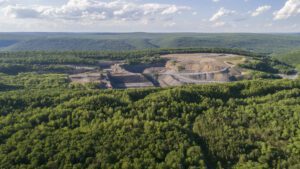I was thinking about how much gas I use the other day in my constant trips to and from work, to the store, to play tennis, to go on weekend trips, to run and get a last-minute ingredient for dinner – and I realized that other than the mileage on my odometer, I don’t really track what I spend on fuel each week. Much less for each month or each year. I suppose if I knew I’d be a little shocked, and I’d also be a little more careful in what I paid for gas, how I operated my vehicle, and how many trips I made each day. The problem is, I only have a vague idea about my fuel buying and consuming behavior and I would never even know if my changes made any difference or not.
Now consider this. What if you had 10 vehicles to gas up every day, or 50? And not just your ordinary sedan or SUV, but fuel-guzzling mining haul trucks – behemoths that weigh 400 tons or more and get next to zero miles per gallon. The big ones use as much as 92 gallons per hour! That’s equivalent to 350 litres an hour. And they run practically 24/7.
Fortunately I don’t have that problem, but that’s exactly what open pit mining operators have to contend with. And as hard as it might be for me to track and control my personal fuel costs, imagine how difficult is would be on the scale of a busy, highly complex, fully operational mine.
But there are solutions to the problem that can shine a nice, bright light on the situation and help rein in fuel costs. With a properly designed fuel management system you can squeeze meaningful savings out of every drop of diesel fuel you pump into those “trucks on steroids.” From advanced telemetry and RFID technology to identify who, when and where fuel is being used, to software applications and at-a-glance dashboards that help make sense out of all the data, there’s no reason to stay in the dark and let that precious commodity go unaccounted for or be used inefficiently.
For more information you might want to read this article published recently in World Coal magazine.

